Book launch dispatches: In praise of unrushed stories & Life-Changing Homes
Step inside homes that transformed lives. Discover stories that linger, not scroll past. It is a book for readers who savor depth over speed.
In an age of acceleration, going at one’s own tempo is an act of rebellion. This is perhaps why, instead of welcoming people to our site with a brand new design and shining, seizure-inducing hollow activity for the sake of staying busy, we offer a search field, a few videos and articles, a few quick access pages on a left menu, and a footer saying *faircompanies, since 2007 (notice “since” and not “last updated 1 second ago”).
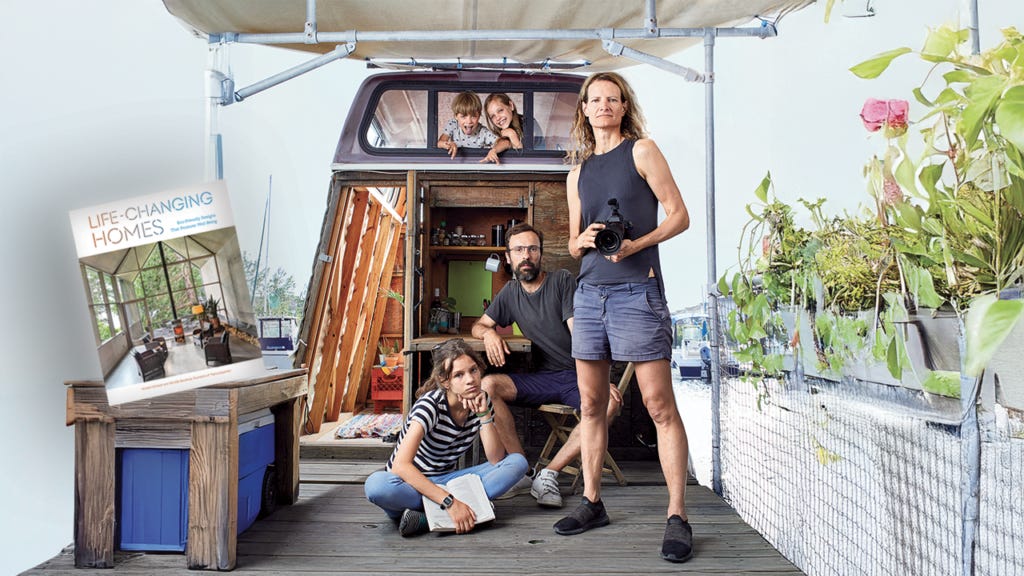
It’s a matter of perspective, and it DOES matter. That’s why, when we were invited to present our book at a legendary local grassroots bookstore on May 27, 2025, we opened the little slideshow, accompanying us with a quote by Thoreau:
“If a man does not keep pace with his companions, perhaps it is because he hears a different drummer. Let him step to the music which he hears, however measured or far away.”
In a world where being “adjusted” to society may be more and more considered a red flag, we try to offer with our work a window to peek inside the lives of those who refused to keep the alienating, technological singularity-driven pace of mainstream society and decided to step to the music they hear. And that’s why, going full circle, that same presentation ends with our book’s acknowledgments and one simple line:
“Idealists and quixotic misfits
allowedencouraged.”
Publishing against the grain: our book, our tempo
To those unaware: it took us a bit over 15 years since we started the site *faircompanies and what would become Kirsten’s YouTube channel, aka kirstendirksen, but we finally put together a nicely-formatted book (over 250 carefully-picked images, 10 transformative chapters, countless adventures and stories referenced).
In a way, Life-Changing Homes is a behind-the-scenes look at our behind-the-scenes style, bringing the way we craft our video stories to a glossy, big-format edition that was designed to be a keeper. To put it in the words of Abrams Books, the New York City publishing company behind our first retrospective book, we “believe that the search for a home is the search for meaning and that the right dwelling can set the direction for one’s life. Sustainability and wellness come together in Life-Changing homes.”
I think the term “coffee table book” does not quite describe the reach of this book, which emerged from long experience, field notes, anecdotes (many of which benefit from the relationship we’ve built with Kirsten’s audience), and the many people we’ve met along the way.
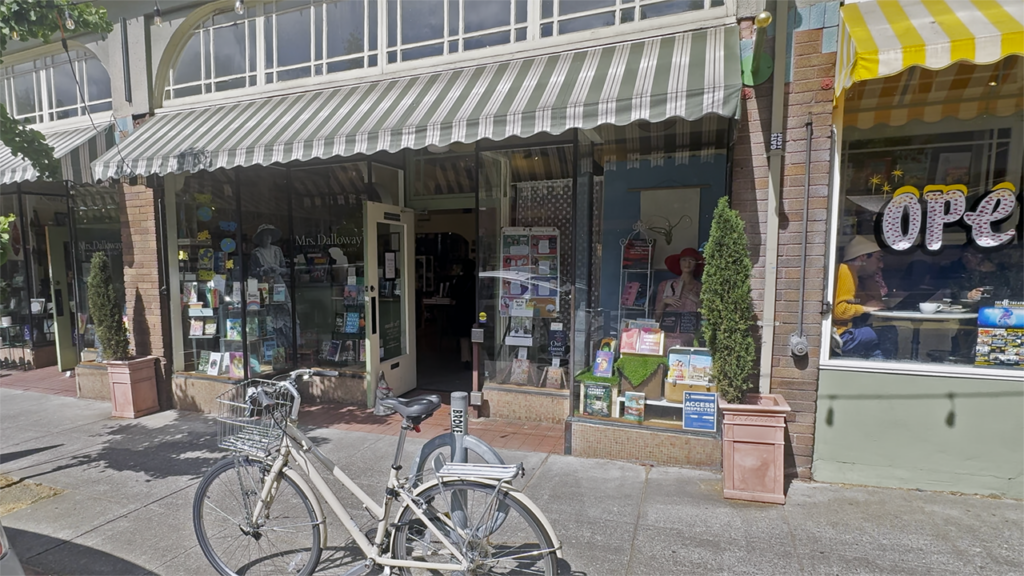
Life-Changing Homes was possible thanks to many things, but it’s important to recognize what we see as the doppelganger of the old-school yin-yang favicon we still use on our very-old-looking (Internet 1.0?) website: unless countless channels, some of which have grown a bigger following (by the numbers) than Kirsten’s, we research, produce, edit, and publish mostly our own material, for we visit the places and meet the people featured in our stories.
We’ve made only a few exceptions regarding this, and we think stories worth telling benefit from encounters between people. That’s why, over the years, we probably disregarded the “packaging” of our digital content while others capitalized on it, doubling down on their thumbnail production and social media presence. We didn’t want to involve others and invested all we had in living the life we wanted to live, as well as producing stories our way. Which means, yes, extensive (and expensive) traveling, and the hidden costs involved.
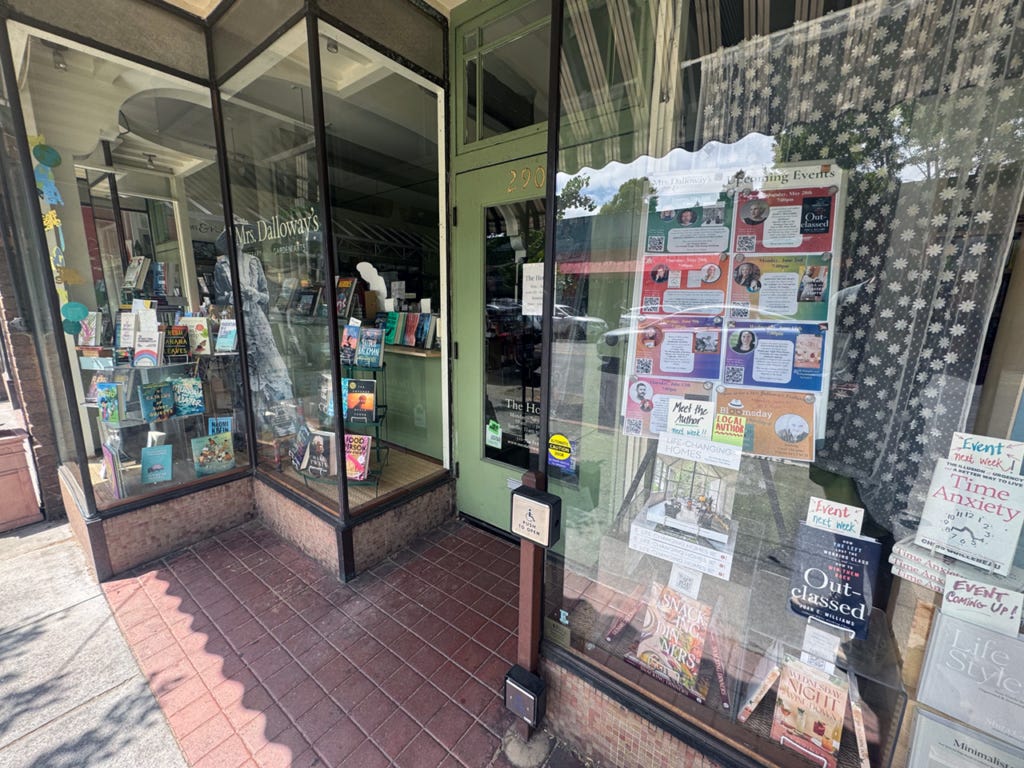
The curse-and-blessing of doing everything yourself: a retrospective book is possible
Our curse—having to research, produce, and compile our body of work—became our blessing once it was time to find a publisher to coincide with a symbolic milestone for Kirsten’s channel: reaching 2 million followers. We signed the book contract with Abrams when the channel had a little over 1.7 million subscribers, and we were still living in France. We finished the initial layout (at times tedious, at times inspiring and nurturing, and at times challenging) when we moved to Northern California.
It was risky to try to time both trajectories, but we soon realized that producing such a book, inspired by a colossal amount of graphic documentation, was going to require time and the opinion of a team at the publishing company that would need to get familiar with who we are, how we work, and what we thought a useful book for a wide audience—issued mainly from our YouTube community—could be.
The story of Life-Changing Homes’ gestation descended upon us as Kirsten and I took our backpacks with our seasoned gear and hopped on our beatdown bikes with the same energy we had 16 years ago, when we didn’t know where the domain faircompanies.com and an account on the new site YouTube was going to bring us.
Sixteen years after, we realized that we had applied the same ethos to life, work, and now retrospective book: although we did have an aspiration and a direction to take (which wasn’t rigid, like a vessel at sea guiding its route through the stars), we didn’t quite know where we were going nor which stories to tell but we wanted to make our work compatible with our personal autonomy and the aspiration to being helpful to others—or, in utilitarian terms, we wanted to create and share more value than we captured.
Stories that unfold instead of following a script
This unplanned direction that, if we keep the metaphor of sailing, allows for the serendipitous accommodations of winds and other conditions, explains why we included a second quote on the presentation capable of summarizing the joy of life itself: in his song Beautiful Boy (here’s Ben Harper’s delicate version), a mature John Lennon included a line that resonates in people, simple yet profound: “Life is what happens to you while you’re busy making other plans.”
As for the haiku-like aspiration of reaching a writing and storytelling registry that could be both simple and profound: we wanted to create a book capable of becoming a light read full of meaning, a reference book to go back to, and a story made of tens of stories designed to both allow linear reading while also inviting a more serendipitous, non-linear, unstructured read more associated with philosophy books full of aphorisms, religious books, or legendary systems-thinking books such as Christopher Alexander et Al.’s A Pattern Language.
The goal was to make the book accessible to the youngest member of our little audience at the bookstore (a seventh or eighth grader) and also permit a more elevated registry for adult readers. DIYers, contractors and architects, interior design lovers, backtothelanders, those interested in wellness, and lovers of profound philosophies of life will find bits and references that will resonate with them.
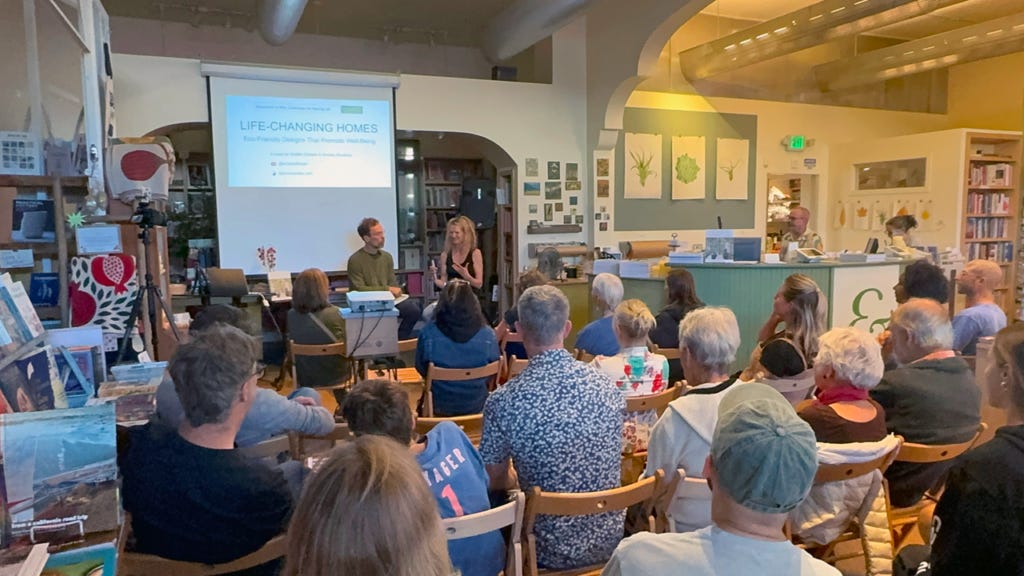
So, we set out to offer a book that can read like a linear story (or a conventional coffee table book) and also like A Pattern Language (or Julio Cortázar’s Hopscotch. And we had a great day showing it to people while recording the rehearsal, so we can show it to our growing community.
It is a serendipitous book that condenses filming/editing/writing style and becomes an evergreen reference book on people’s shelves. Was this even possible? We tested our assumptions through trial and error, but soon we saw that we loved what we were doing; we could pick the stories we wanted to write on, and after working for years on assignments as a TV producer (first in San Francisco, later on in New York City), Kirsten found refreshing to be back to the very thing she loved since she was a teenager: to produce meaningful stories from beginning to end.
Book launch dispatches from a grassroots bookstore
Just like the book we launched on May 27 at a cozy little bookstore along the lively stretch of College Avenue in Berkeley, California, from the beginning, we didn’t want to direct the stories we were producing but to have them emerge organically as we interviewed people and they revealed the places they were living in their tips, challenges, and anecdotes. We didn’t want to force a story by showing up as hosts with formulaic, ready-made questions and a story arc. This, by the way, is what we sadly see happening in streaming services across the board, regardless of the budget (with a few honorable exceptions: watch one Netflix documentary, and then watch them all).
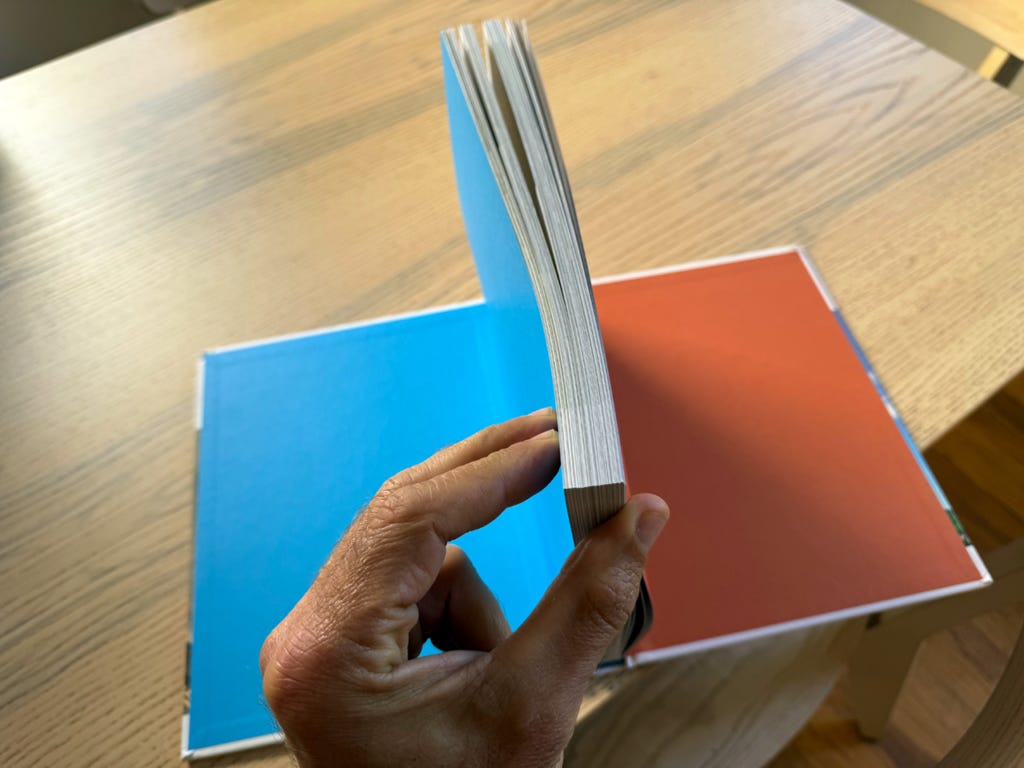
Our plan did have a problem, however. Only indie productions of documentary authors from the 50s and 60s (Edgar Morin and Jean Rouch in France doing what he called Cinema Vérité, Robert Drew and others developing a similar, more direct and behind-the-scenes style in North America they called Direct Cinema) seemed to have gone out of the rigid constraints of video production for documentary-type pieces.
Kirsten and I didn’t know which style we wanted to work on now that we were deciding what and how to tell stories, but at least we KNEW what we liked and felt right to us when we saw it. We appreciated people writing and telling stories in a spirit reminiscent of New Journalism—immersive, observational, and reflective—and the “rawness” that can be felt in film styles that lacked flourishes and post-production overkill, a bit like the Nouvelle Vague French movies or those made by John Cassavetes. But we wanted it for the real world. That YouTube was in its inception felt just right, and Kirsten was ready for the moment.
As I chatted with Kirsten while we finally crossed a few big intersections and we headed east, climbing the Berkeley slope to get to College Av. on a quiet secondary street, I couldn’t help but think about the fact that many of our known unknowns from the beginning had turned out alright, and I was glad that the way things had developed was as organic as is the way Kirsten edits the stories.
Beginning with a question
It turns out that many people had faced the very same challenges, reaching very similar conclusions in the process. That we didn’t know this, nor did we want to copy anyone, but finding it the hard way (by trial and error) says something about its validity as a style. Legendary editor Walter Murch (think Apocalypse Now) puts it this way, apparently repeating something he’d heard others say:
“The editing table is where the film tells you what it wants to be.”
Or, put by documentarian Frederick Wiseman:
“We don’t begin with a conclusion. We begin with a question.”
When seeing how Kirsten liked and wanted to work, I realized her style was exactly the way I wanted to write and produce stories, too. In other words, a film or a long-form article isn’t a prefabricated record of what happened but a record of the creator’s engagement with what happened.
Talking about this with Kirsten over the years, she’s always played it down; all she wants is to tell stories and doesn’t trust etiquette (nor has she the itch for institutional recognition of her trade, just the appreciation of people watching).
But, when trying to explain to people the way the stories get built, we often find ourselves looking for simple ways to explain that the images, the questions, and the arc aren’t precast in a template, and even the most humble, around-the-clock filmmaking can be like a sculpture: you have to start with a block of marble, granite, driftwood, you name it, and chip away all you feel it’s suppletory until the truth reveals itself.
We arrive earlier than expected at Mrs. Dalloway, lock the bikes, and decide to go up and down College Avenue to get some b-roll before it’s time. Neatly themed around Virginia Woolf, the bookstore is still open, and we observe the neatly arranged book sections. It feels like the type of bookstore one used to find only in bookish places, where slow living and self-cultivation are still cherished enough for such places not to have been totally banished.
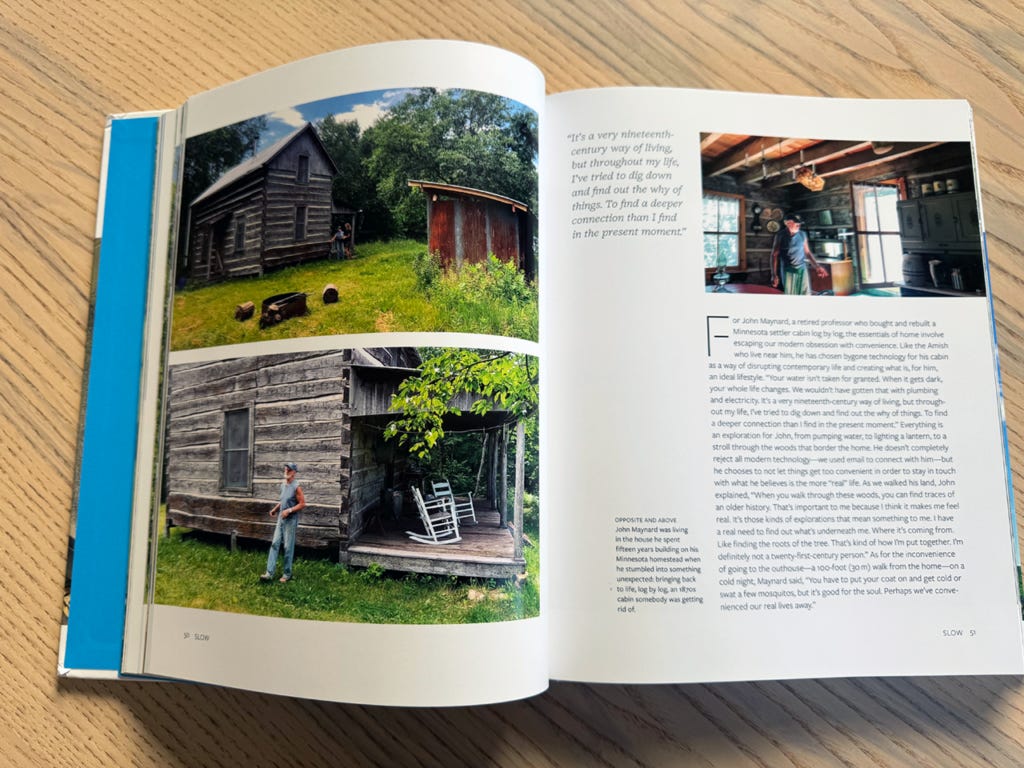
A repository of unrushed tales
We decide to enter and take a peek around; there’s a rather important gardening spot, which doesn’t surprise me. This is the town where people like Michael Pollan decided to grow their gardens. We wonder for a moment how many people will show up right after a three-day weekend. But we feel at ease when, a few minutes after we meet, the owners, Eric and Jessica Green, appear and reassure us: it’s a small and cozy environment. And it works: from then on, we’re just glad to be there and set up the cameras to do the recording, then wait for people to come.
People began arriving at 7:00, including a few relatives, many good friends (some of them faces from the channel’s community), and some people we didn’t know. I was glad to see all ages represented, from a young teenager accompanied by his father (a neuroscientist at Stanford, a friend) to a few active-looking older folks at the other end.

Eric, the bookstore host, opened the event and made the presentation of the authors, and as soon as he finished, Kirsten went to talk about one of many adventures. We didn’t want to read straight out of the book or follow a rigid or magisterial script, so we blended the anecdotes with a little slideshow (10 slides, one of which included a 6-minute video).
Kirsten had planned to reference ten or so of the stories highlighted across the book, and we soon realized that, like our videos, the more you zoom in on the story, the richer the fractal of reality becomes, so we commented on small but essential details, comments by people, personal experiences, and many, many of the layers that make life worth living. In the end, we referenced fewer stories but talked a bit more than we expected about the big picture, mainly thanks to the attendees’ incisive questions, which can be followed on the video of the event that Kirsten put together.
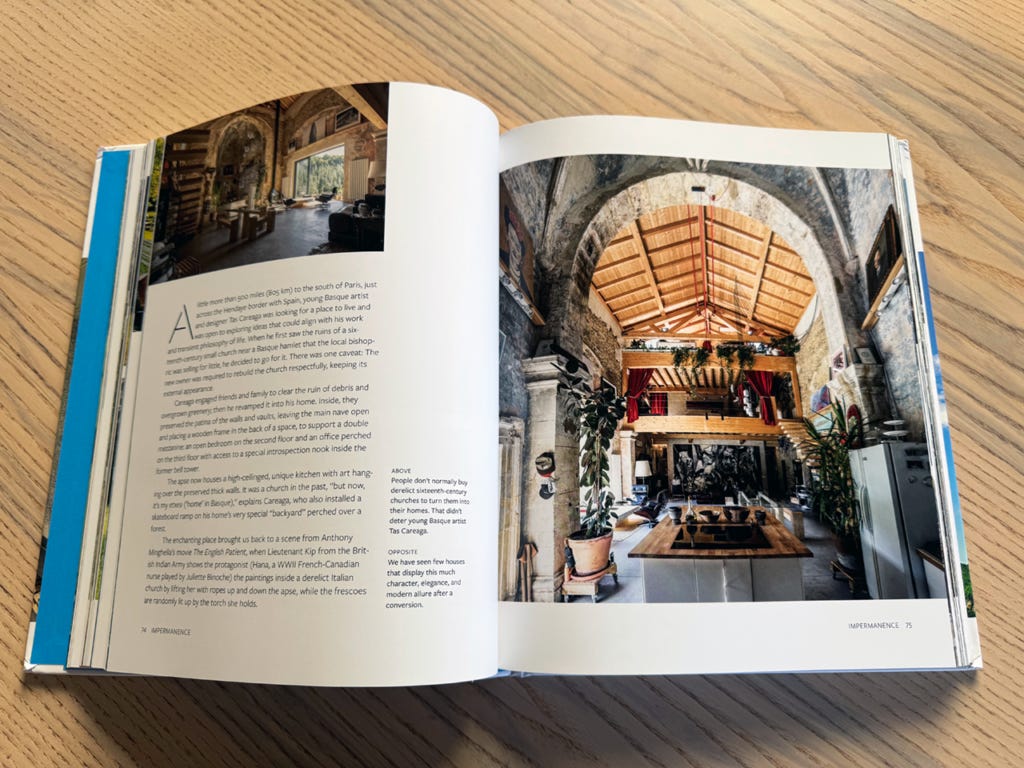
We decided not to overwhelm people with pictures and selected fragments to read; we think they’ll cherish more to discover on their own the fractal artifacts of meaning we deployed across the stories we tell. Still, there were many anecdotes that embody how spaces can guide us inward, shift our pace, and invite different ways of being. From the remote Canadian landscape of Lake Saint-Jean to coal huts in Sweden, from an Italian mountain hermit who relies on expansive views for interior clarity to a Minnesotan who rebuilt a 19th-century log cabin to reconnect with a forgotten rhythm of life—these vignettes illustrate how architecture is never just about walls or roofs. It’s about thresholds between worlds, past and present, silence and conversation.
A book that keeps asking and becomes useful with time
The questions from the audience were especially thoughtful, digging into themes of simplicity, disconnection, solitude, beauty, and even discomfort—and how all these forces intersect in our homes. Some people stayed afterward to share their own stories: attempts at simpler living, the contemporary disconnection among people, the tyranny of time scheduling and time acceleration, and the importance of family and friends.
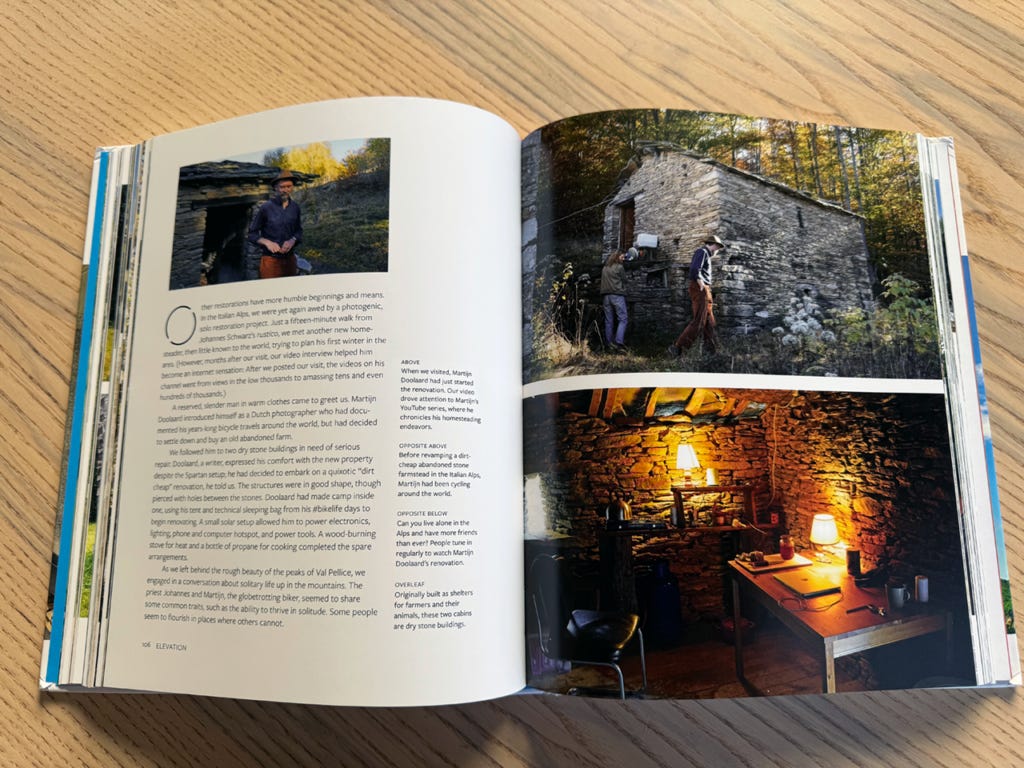
Another of our slides asked: “Isn’t ‘life-changing’ hyperbole?” We think the book answers this question in a profound way. After over 15 years of documenting people and people’s places, we believe (and show proof to make our case) that dwellings are catalysts for profound change. Like the root of the word “ecology,” we look at the world (and are “within the world”) primarily from our homes.
This book shows how some people are crafting their own lives with deep intention and quiet courage, sometimes out of necessity and sometimes to overcome upheaval. That’s why we claim in the slides that:
“More than just architecture or self-building (or the tensions between the two), this is about life pivots, reinventions, and quiet revolutions.”
In the end, it’s about stories (and people), not dead stones.
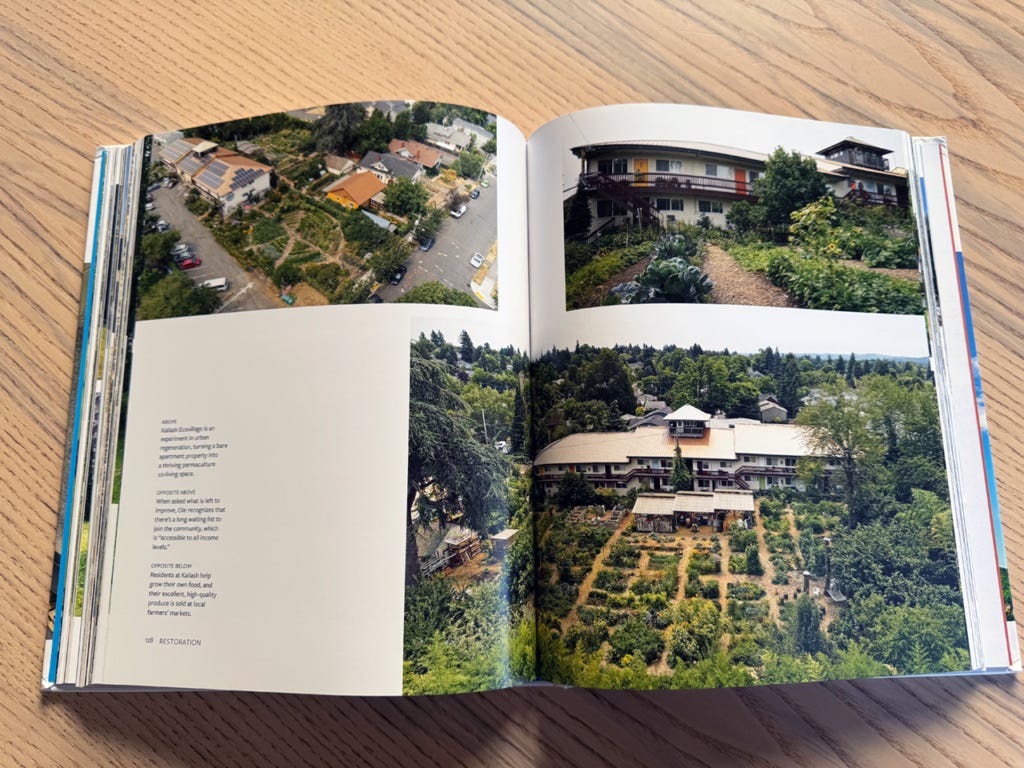
It contains humans, not dead (or only-digital) stones
As a good antidote to planned obsolescence and AI platitudes, this book is an open conversation that contains multitudes, bringing people to enchanted places. Just like a good friend would.
You can find out more and order our retrospective, forward-looking, referential book LIFE-CHANGING HOMES: Eco-Friendly Designs that Promote Well-Being 📖 (click here to visit Abrams Books’ official page).





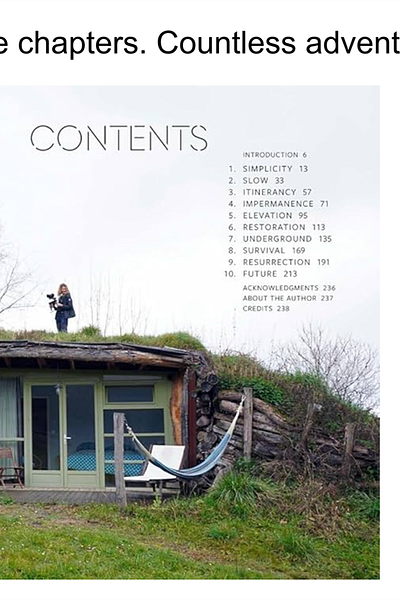

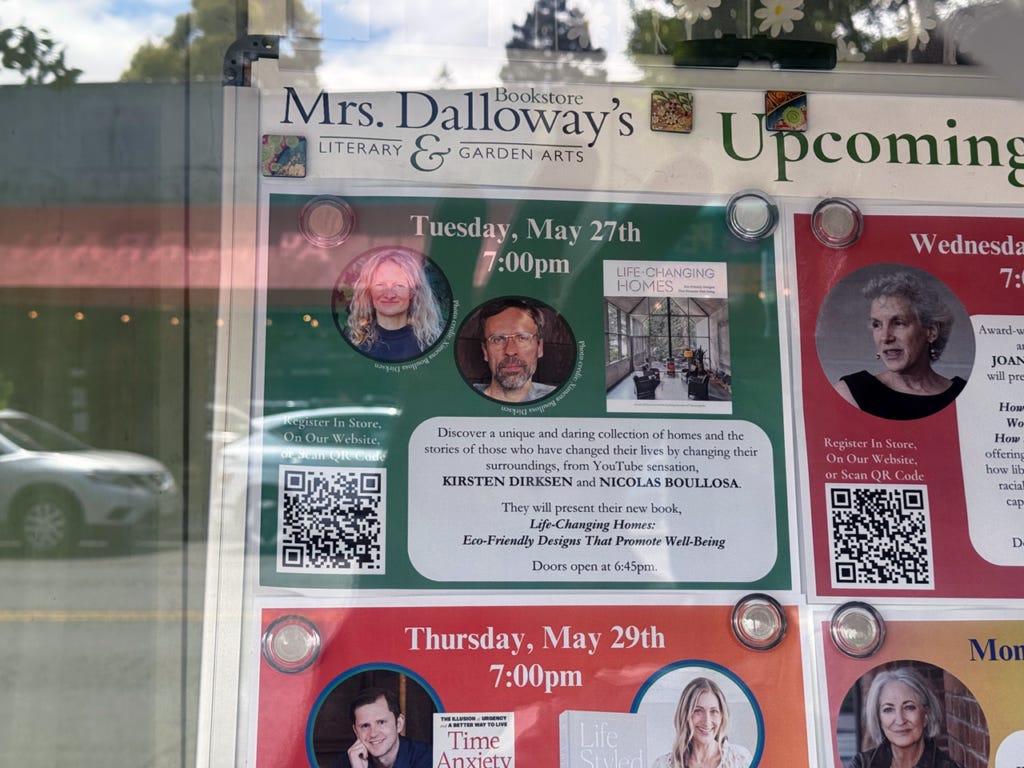
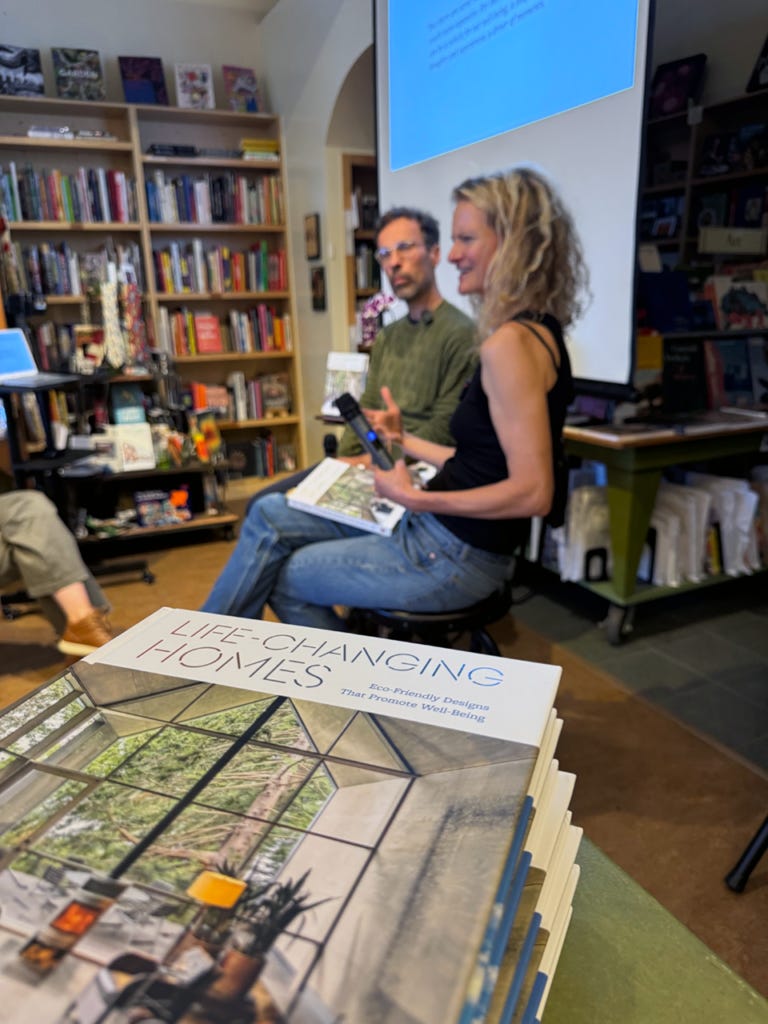
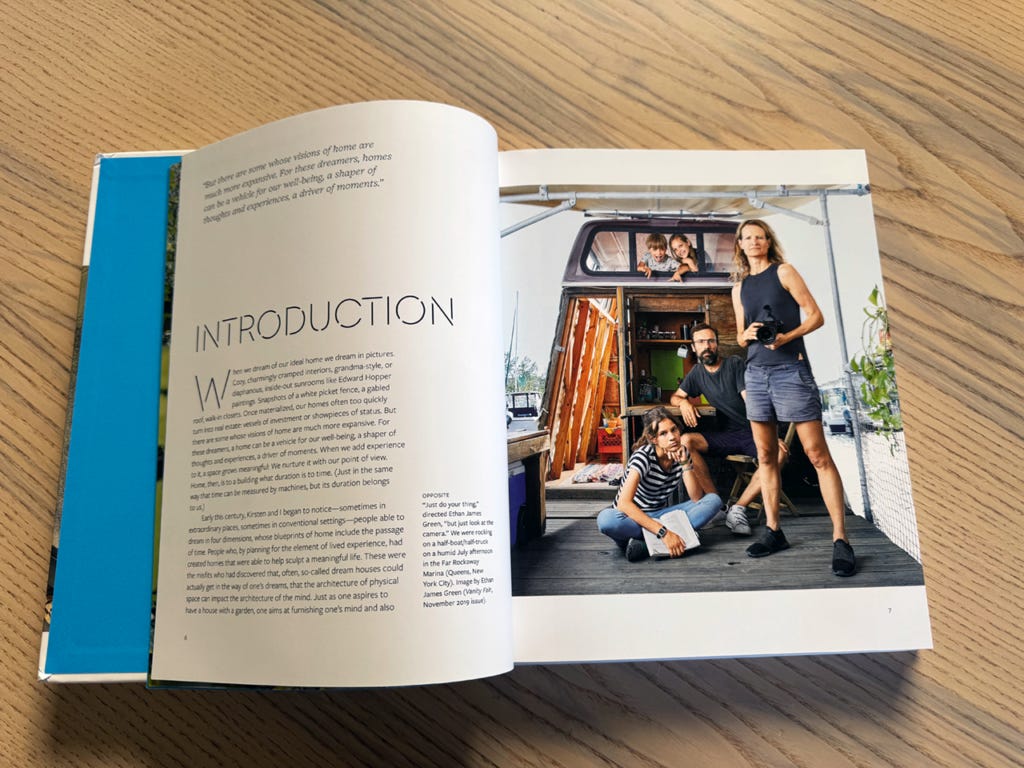
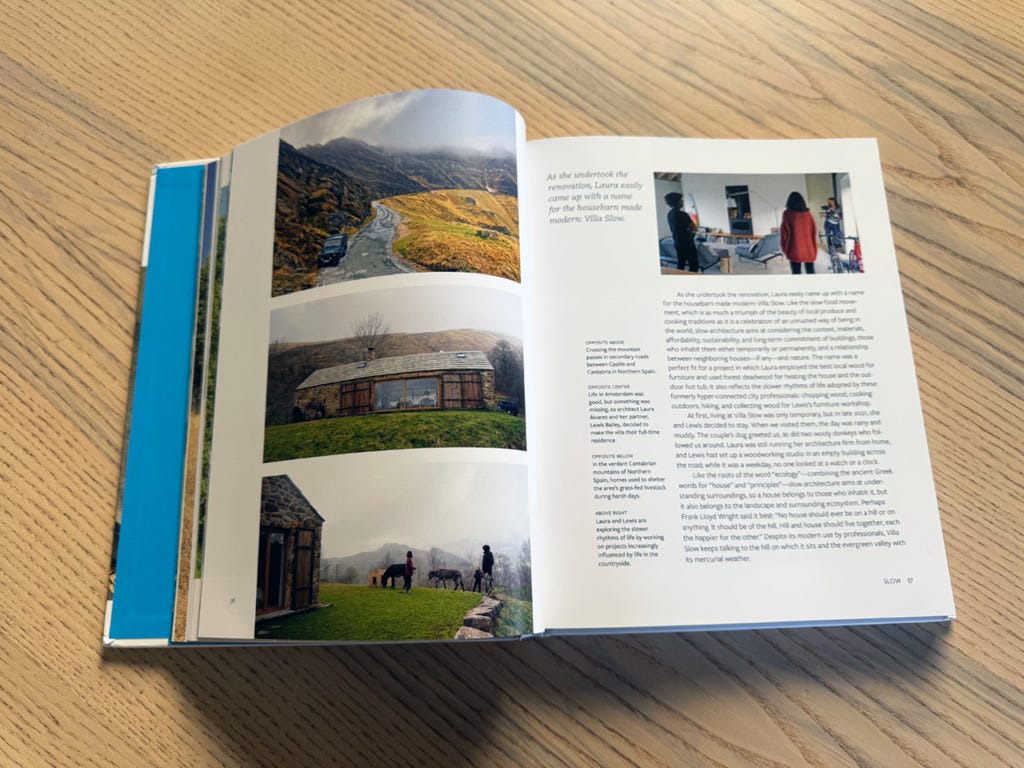
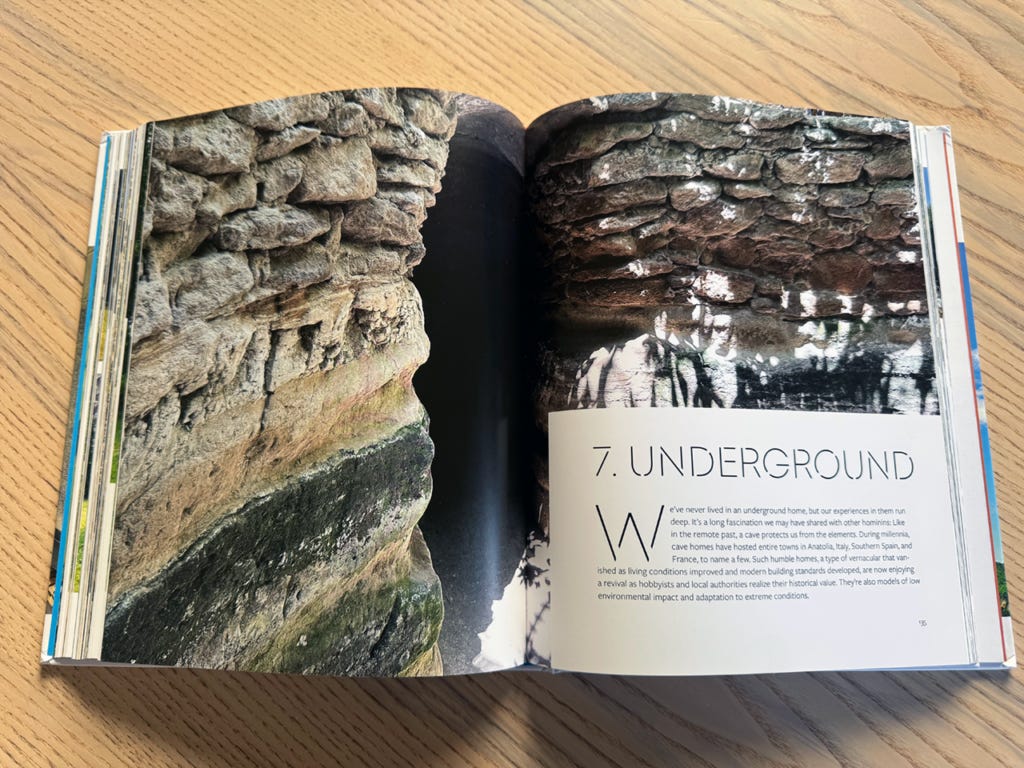
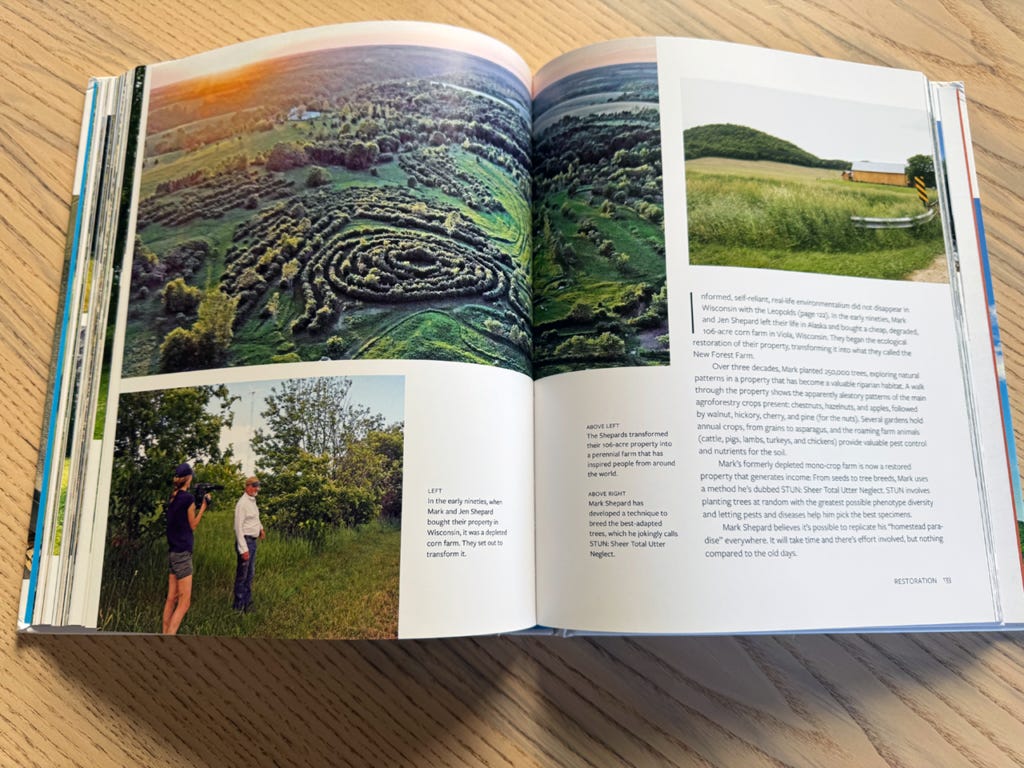
“Kristen doesn’t trust etiquette” is felt in every film I’ve seen made from FC. Kristen’s inquisitiveness is genuine and pure, almost child-like.
I’ve loved the website the moment I stepped on it and I am grateful it has remained as it’s designed: functional, direct, no frills.
Look forward to my copy. I wish you and your family the best. Way to remain True. Bravos, all around.
"Life is what happens when you’re busy making other plans."
Here's a song that goes with the article (and with the presentation, and with life itself): Ben Harper's delicate version of John Lennon's "beautiful boy." Link on spotify and YT, respectively: https://open.spotify.com/track/5cUbs8a3T4f9xdTeBqrQCy?si=dc41e1721c4842a1
https://youtu.be/IljskZuz7LQ?si=_bHLump8DLsgIx3H